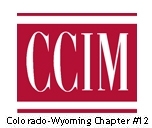Welcome to Cherry Creek Perspective – monthly news of mobility-related and affordable housing real estate throughout the Denver-metro area, and news of real estate, public sector and economic developments in the southeast Denver – Glendale area, relying in part on articles published in Real Estate Perspective. To read the newsletter easily on a mobile device go to:
www.jres.com/publications/cherry-creek-perspective/
Research a property or a market in our searchable on-line library of Real Estate Perspective articles compiled since 2001 at:
jres.com/publication-content-search/
Each business day for Real Estate Perspective, the JRES staff reviews all Denver metro area wide and local newspapers, trade journals, government websites, blogs and other sources for commercial and residential real estate and economic news. News items are condensed into easily readable summaries providing all of the essential facts for the Real Estate Perspective newsletter. And Apartment Perspective, provides a detailed update of Denver metro area apartment rental, vacancy and development/construction activity including proposed projects.
The latest on Real Estate and Mobility is also available at a Group in LinkedIn with that name and moderated by Bill James at:
www.linkedin.com/groups/4760558
Please forward this email to others who may want to subscribe at:
OPPORTUNITIES

In the post-war auto era, parking has dominated urban development. Denver has more acres of parking lots than parks. Nationally we paved over several states worth of land for up to 2 billion parking spaces. On top of poor land use and environmental/aesthetic consequences, parking costs dictate pro formas and drive up the cost of real estate, squeezing out affordability and leasable/salable space.
Is that scenario changing? The rise of ride sharing, FasTracks, walking and biking may be decreasing parking demand. Autonomous vehicles may eliminate the need for parking as we know it.
colorado.uli.org/event/the-future-of-parking-where-the-asphalt-ends/

SITE TO DO BUSINESS, TRAINING AND EXPERT SOLUTIONS
Bring your headaches, your stresses, your “what keeps you up at night” problems to this insightful session and walk away with applicable solutions that can be applied to your situations. Mark Van Ark, CCIM, SIOR, is Commercial Director of KW Commercial in Boulder, Colo. During his 35 years in commercial real estate, he has done appraisals and transactions for companies like U.S. Department of Veterans Affairs, Noodles, Tesla, and Michael Hess Brewing.
Friday May 31, 2019
11am-3pm
1120 Lincoln St 2nd Floor Conference Room, Denver
A delicious catered lunch will be served
www.cowyccim.org/event-3383470

CITY & COUNTY OF DENVER, RTD AND PARTNERS KICK OFF ENVIRONMENTAL PROCESS TO DETERMINE THE FUTURE OF DENVER’S 16TH STREET MALL
The City and County of Denver and the Regional Transportation District (RTD) are officially kicking off the next phase of planning for the future of the 16th Street Mall as one of the city’s most vital connectors and important public spaces. The effort is in partnership with the Downtown Denver Partnership (Partnership), the Downtown Denver Business Improvement District (BID), the Denver Urban Renewal Authority (DURA) and the Federal Transit Administration (FTA).
The public is invited to engage with the project team on July 22 at Meet in the Street, a program funded by the BID and produced by the Partnership. Two public open houses are also tentatively scheduled for July 27. Additional information about public engagement opportunities will be posted to the project website as details become available, at:
www.denvergov.org/themallexperience
www.downtowndenver.com/initiative/environmental-process-begins-determine-future-16th-street-mall/

RAIL~VOLUTION 2019
transit & community development conference
Come together with professionals who share your dedication to transit, livability and communities. Choose from 75+ thought- and discussion-provoking workshops, ranging from cutting edge policy overviews to practical hands-on strategies. Explore real-world issues and projects across the region via our unique mobile workshops. Registration Opens May 2019
September 8-11, 2019, Vancouver, British Columbia
railvolution.org/the-conference/conference-information/
MOBILITY
Denver City Council Member Mary Beth Susman reports over the next five years Denver will be installing 125 miles of new bike lanes increasing the number households within a 5-minute ride of a high-comfort bike facility from 38 to 75 percent. Fifty of the 125 miles of new bikeways will be funded by $18M from the Elevate Denver Bond, approved by voters in 2017. Public meetings are planned in May about eight high-comfort, bond-funded bikeways that will be installed in 2020 that will add about 9 miles of bikeways to the city’s network.
Denver is moving forward to install a standard, striped bike lane on 11th Ave from Yosemite to Quebec. Existing conditions, parking utilization survey, vehicle counts, and intersection analysis began in April. Initial designs and community input will begin in late May. Installation will be coordinated with roadway resurfacing this summer. The 11th Avenue bikeway will connect portions of the city’s planned complete bicycle network, as detailed in Denver Moves.
www.denvergov.org/content/denvergov/en/bicycling-in-denver/infrastructure/yearly-archive.html
Inter-neighborhood Cooperation reports that with the Elevate Denver Bond Program, Denver is moving ahead with several new high-comfort bike lanes throughout the city — eight of them are currently being planned and built in the upcoming wave, and neighborhood meetings for each are underway. New high-comfort facilities will be created in the Green Valley Ranch, Elyria-Swansea, Washington Park, Montbello, City Park, Hampden South, Jefferson Park and Stapleton neighborhoods
www.denvergov.org/content/denvergov/en/bicycling-in-denver.html
Denver City Council Member Kendra Black announced that Junction Gourmet Pavilion is a new chef-driven Food Hall opening later this year in the Colorado Center. It will feature inspired creations from both locally and nationally known chefs. Featuring 10 unique concepts, a 40 foot bar, and a coffee shop under one roof! Junction brings culinary variety and innovation to the neighborhood dining scene.
livecoloradocenter.com/wp-content/uploads/2019/01/Colorado-Center-Brochure-Digital.pdf
To provide a calm and relaxing space for four-legged travelers, Denver International Airport (DEN) announced “Premium Pet,” a luxury pets-only, airport lounge, will be coming to DEN in late 2019. Amenities include: toilet bowl or bacon-flavored water and a selection of local meats, craft kibble and catnip; personal entertainment systems play favorites like “Lady and the Tramp,” “The Secret Life of Pets,” and “Citizen Canine.” Additionally, for pets feeling homesick, “window-down air simulator pods” are available to ensure pets feel as if they are in the comfort of their human’s backseat
RTD asks residents of the eight-county Regional Transportation District (RTD) who are interested in public transit issues and community engagement to apply for one of three vacancies on the RTD Citizens Advisory Committee (CAC). The 17-member citizens group advises the agency on RTD’s strategies, initiatives and transportation programs, including the FasTracks transit expansion program. CAC members represent a wide variety of backgrounds, interests and professional experiences. The group’s public outreach meetings keep metro-area citizens informed of FasTracks progress and RTD programs and encourage input from local communities. To be considered, applications must be received by the close of business on May 30, 2019. Selection criteria will include, but not be limited to, residency within the RTD district; a demonstrated interest in public transit and the FasTracks program; previous community service; experience working with local jurisdictions on regional issues; and professional expertise.
The CAC’s role is to:
- Continue to monitor and provide input on the improvements for each corridor in the FasTracks Plan.
- Become familiar with the District’s strategic plan and long-term vision.
- Provide region-oriented advice to RTD regarding the implementation of the strategic plan, its strategies and initiatives.
- Represent the citizen perspective on behalf of a wide range of stakeholder interests and community organizations.
- Gather information from community members to share with the agency.
- Share information with community members to promote public awareness of the agency’s programs and projects.
- Other tasks as assigned by the RTD Board of Directors.
For more information, contact Roger Sherman at 303-592-5465.
www3.rtd-denver.com/elbert/news/index.cfm?id=11814
RTD also reports the University of Colorado A Line, like all of RTD’s commuter rail lines, uses positive train control (PTC) technology to slow or stop a train if it is traveling too fast, another train is stopped ahead or a maintenance crew is working on the track. RTD and commuter rail concessionaire Denver Transit Partners (DTP) recently updated and tested PTC software on the University of Colorado A Line, the B Line and the G Line as part of the Federal Railroad Administration (FRA) Grade Crossings Continuous Improvement Action Plan. To conduct the testing, DTP had to shut down the PTC and operate with automatic train control (ATC) in place. The software update and testing is necessary for efficient and reliable operation of PTC.
Streetsblog reports that transportation officials launched a statewide listening tour that will give Coloradans the chance to sound off on how the state should spend limited transportation dollars. “Part of the reason we’re doing this is to have an active conversation with people about the challenges they have and how you can solve them with different types of transportation,” said CDOT Executive Director Shoshana Lew in an interview. When asked how the listening tour would deal with inevitable public support for widening freeways — despite the phenomenon of induced demand where newly expanded roads soon result in worse traffic than before — Lew said that the outreach process will help Coloradans understand how public transportation could help solve congestion. But given what we know about induced demand, why are multiple highway expansions happening now, like “I-25 South Gap” project from Monument to Castle Rock? Lew said that the region needs road capacity there, in part for safety reasons, but acknowledged that the corridor is nearing its limit. “85% of our population lives along I-25, and we know that we can’t widen our way out of that corridor,” she said. “We have to start a serious conversation about multimodal options along the front range.”
How about a train along the corridor? Lew says that under Gov. Polis’ administration, CDOT has already accelerated the planning process at the Front Range Passenger Rail Commission, which the State Legislature formed in 2017. And along the traffic-choked I-70 corridor to the mountains, why doesn’t CDOT add significantly more Bustang service? “Thinking about how we use buses and transit to get people to where they need to go, particularly in high tourism season, is a very important conversation and one that we’re quite committed to looking at,” she said. Lew says the listening tour will continue through the summer and the agency could start making decisions guided by public comments as soon as this winter. But first people need to offer feedback.
www.codot.gov/programs/colorado-transportation-matters/your-transportation-plan
denver.streetsblog.org/2019/05/20/to-people-who-walk-bike-and-ride-transit-cdot-is-listening/
Robots on the road – how close is our driverless future?
ATTAINABLE HOUSING
Colorado Housing and Finance Authority (CHFA) announced the passing of HB19-1228, which increases the amount of state Affordable Housing Tax Credits available for annual allocation by CHFA from $5 million to $10 million for 2020 through 2024. CHFA is the allocating agency for state Affordable Housing Tax Credit (state AHTC) program in Colorado. HB19-1228 was sponsored by Representative Shannon Bird, Representative Brianna Titone, Senator Rachel Zenzinger, and Senator Jack Tate. The bill was signed into law by Gov. Polis. The state AHTC is a vital resource in Colorado, directly supporting 4,796 affordable rental housing units since 2015, and leveraging $534 million in new private sector investment in Colorado housing. A bipartisan, broad-based coalition of business and housing industry leaders, social service providers, and nonprofit organizations supported HB 19-1228. The state AHTC program is based on the federal Low Income Housing Tax Credit (LIHTC) program which was created in 1986 under President Reagan and is recognized as the most successful affordable housing program nationwide. The program incentivizes private-sector investment in the development and preservation of affordable rental housing. Historically, the median household income of residents living in state AHTC-supported units is $34,598 or approximately 42 percent of the Area Median Income statewide.
Multihousing Pro magazine reports that Housing and Urban Development Secretary Ben Carson has hit the media circuit as 8,700 neighborhoods across the country receive standing as official Opportunity Zones through clarified definitions around the 2017-issued tax break. The new rules should allow fund managers to raise more money and developers to put projects in motion in designated low-income zones. Daylight is burning as accruing the window for obtaining the maximum benefit from the new rules ends Dec. 31.
mhpmag.com/2019/04/the-big-fat-beautiful-number-zero/
REAL ESTATE
Denver Community Planning and Development reports the Denver City Council officially adopted Comprehensive Plan 2040 and Blueprint Denver – a city guided by a measured, common-sense approach to new growth and–for the first time–approaching land-use decisions through the lens of social equity.
www.denvergov.org/content/denvergov/en/denveright/news/2019/Comp_Plan_Blueprint_Denver_Adoption.html
www.denvergov.org/media/denvergov/cpd/blueprintdenver/Blueprint_Denver.pdf
Lowry Community Master Association reports that ground has been broken on the major commercial space of the Boulevard One at Lowry development, at the corner of Lowry Boulevard and Pontiac Street. The biggest anchor business will be a 25,000 square foot Lucky’s Market, an organic-focused supermarket chain based in Boulder. A Logan House Coffee Company is also slated to join the center. The project is scheduled for completion in late 2020.
www.boulevardonelowry.com/retail/
REAL ESTATE AND MOBILITY
Building a Multimodal Future – Connecting Real Estate Development and Transportation Demand Management to Ease Gridlock
Building a Multimodal Future shows how planning land uses and transportation together with transportation demand management (TDM) policies creates safer, more walkable environments. Authors Schor and Tallis explore the origin, implementation, best practices, and results of TDM policies from 10 distinctive communities across the US. Uniquely, it includes the perspectives of those who implement these policies and those who are affected by them, including property owners, developers, managers, and other professionals who work with TDM policies.
FlashParking sees the future of garages as ‘urban mobility hubs’
Ride-hailing has been blamed in-part for increasing urban congestion, as drivers often spend time trawling the streets looking for their next fare, known as “dead-heading.” Weiss said if parking garages can be revamped into staging areas, it can get them on and off the streets as needed. He said the plan is to “repurpose or extend some real estate within those urban garages and allow them to park their cars, save fuel, get off the streets, ease congestion and basically stage there until their next fare.” And with dockless bikes and scooters coming under repeated scrutiny for cluttering the public right-of-way, Weiss said providing parking and charging for them in a garage could be a way to solve that problem. Companies like Charge have looked at offering parking for dockless vehicles, and Weiss said there are plenty of opportunities for dockless providers to partner.
www.smartcitiesdive.com/news/flashparking-sees-the-future-of-garages-as-urban-mobility-hubs/554609/
Denver’s Upcoming 16th St Mall Renovation Hits Another Milestone
The project, now estimated to cost between $90 and $130 million, will replace and fix problems with the mall’s distinctive granite tiles while making the 1.2-mile thoroughfare a better place to get around and a more enjoyable place to hang out. The renovation will replace the pavers with textured granite designed to avoid slipping. It will also fix a costly problem that trapped water under the tiles and compounded the frequent freeze-thaw cycles that already torment Colorado roads… Contrary to widespread belief, architect I.M. Pei [who passed on recently] did not design the pattern. A partner in his firm, Henry Cobb, led the team that created the design. The firm will not be involved with the renovation. Buses will be moved to the center of the 16th St. Mall, allowing the plazas currently between the bus lanes to be moved to the sidewalks, which would be widened… Construction could start as soon as next year.
denver.streetsblog.org/2019/04/17/another-step-cleared-before-16th-st-mall-renovation/
Portland to allow restaurants to seat guests in parking spaces
The city will allow only five of the so-called parklets as part of a pilot program, and a restaurant that gets a permit to set up tables and chairs in an on-street parking spot will have to pay the city $5,520 to do so. That’s the amount the city would have made from parking fees in the spot had it now been occupied by diners, according to a city announcement.
Inside the Smart Highway System That Could Revolutionize Travel in Colorado
Devices related to what’s known as V2X technology are already being installed along the Interstate 70 mountain corridor, and while they’re not able to talk to the vast majority of rides presently using the route, that’s likely to change early in the next decade.
Sidewalk Labs releases street design principles
The mobility revolution means that roads that were once designed for cars are now having to serve bikes, scooters and pedestrians, forcing a new conversation about shared use and safety. As pedestrian deaths climb, cities have been looking to street design as a solution. Some, like Detroit, have been shaving lanes off major thoroughfares to reduce speeds and create more space for alternative transportation; earlier this month, Cambridge, MA became the first city to mandate protected bike lanes.
www.smartcitiesdive.com/news/sidewalk-labs-releases-street-design-principles/553599/
L.A. homes near mass transit often sell for more, a study finds
Mentions of the city’s transit almost doubled over the period, and for all but the most expensive quarter of homes, sellers got rewarded for it. On average, the premium was 4.2%. The share of Los Angeles County listings on Trulia mentioning transit-related keywords rose to 4.5% in 2018 from 2.3%, according to Trulia. Although the fraction is still small, it is growing rapidly, Trulia said. One wrinkle in Trulia’s study: Buyers of the most expensive quarter of homes in Los Angeles paid 10.5% less on average for properties advertising transit access.











